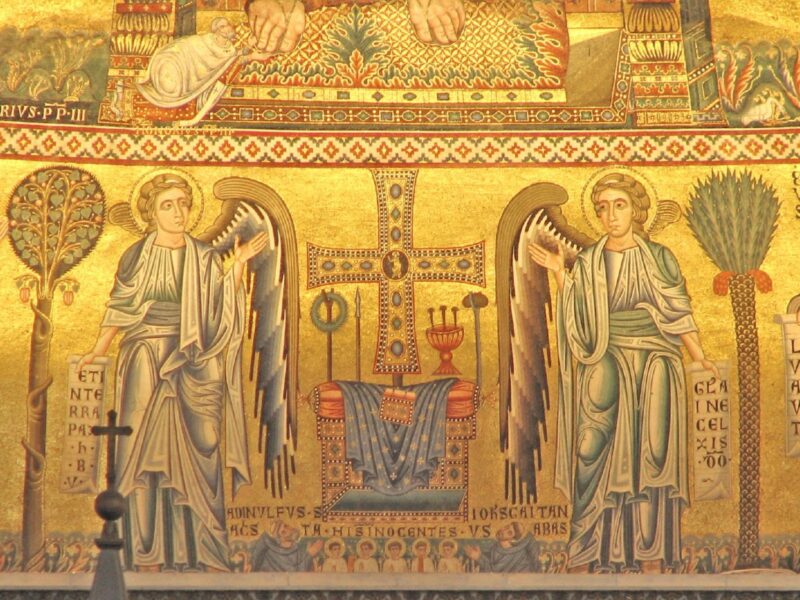More Alive
The Solemnity of the Assumption. Fr John Farrell traces the faithfulness of Our Lady.
(The Solemnity replaces the Sunday in many parts of the world including England & Wales and Scotland; sermons for 20th Sunday of the Year can be found in our liturgical archive here.)
In today’s gospel Saint Elizabeth exclaims ‘Yes, blessed is she who believed that the promise made her by the Lord would be a fulfilled’. Today we celebrate the glorious fulfilment of Our Lady’s faithfulness.
Through faith we are all united to Christ as one body, as the living body is united to its head. In our second reading at today’s Mass, we are told: ‘Just as all die in Adam, so all will be brought to life in Christ.’ This then is a feast of belonging and of hope: ‘that the promise made by the Lord will be fulfilled’. St Paul goes on to say, ‘But all of them in their proper order: Christ as the first fruits and then, after the coming of Christ, those who belong to him.’ Who belongs to him most closely but his fleshly mother who lovingly embodied him and now in the Assumption shares bodily in his resurrection life and love? ‘Where Christ has gone before we hope to follow.’ A feast then of faith and hope and love.
At the heart of Christian discipleship and all Christian spirituality is receptivity, an openness to the initiatives of the Holy Spirit. At the Annunciation we are given Mary’s graced receptivity as a model for our Christian discipleship. ‘Behold the handmaid of the Lord, be it done to me according to thy will.’ The Annunciation – so beloved by so many artists – beautifully portrays the Catholic teaching of co-operative grace.
Her gracious receptivity and her graceful co-operation are rooted in her Immaculate Conception – the first of Christ’s miracles. For our part, we must be daily receptive to the graces and instincts of the indwelling Spirit who both frees us from our past and elevates us towards our future glory: day by day, little by little, dying and rising. Receiving, co-operating and integrating into our unique embodied and only once to be lived humanity we are already participating in the divine life which will be ours in fullness at the end of time.
At the wedding feast of Cana Mary instructs us – the servants who are to be turned into friends, the water bearers who are to become carriers of the rich wine of the gospel – ‘Do whatever he tells you’. Day by day, she points us into the pathways of her Son.
Mary receives the mission to be the mother of all Christians, the mother of all, at the foot of the Cross. She receives this commission as a mother looking on the suffering of her son, unable to relieve his pain but one with him in his suffering. A mother of sorrows and acquainted with grief. As a mother she witnesses the death, the spear in the side, the deposition of the dead body and the closing of the entrance of the tomb. ‘Mourning and weeping in this veil of tears.’ As a young mother, for his sake, she with her husband Joseph, were refugees and asylum seeker in Egypt. ‘Banished children of Eve.’
Now, assumed into heaven and crowned as Queen, she is acclaimed as ‘Mother of Mercies’. Knowing the joys and hopes, the grief and anguish of the people of all time she makes her own their joys and hopes, their grief and anguish.
At Pentecost, she who was the fulfilment of the image of the Faithful Daughter of Israel is placed at the centre of the apostolic mission to all people’s and all nations.
Now in her Assumption she is more alive than we are and active in her mission. ‘Holy Mary, Mother of God, pray for us sinners now and at the hour of our death. Amen.’
Readings: Apocalypse 11:19,12:1-6,10 | 1 Corinthians 15:20-26 | Luke 1:39-56



